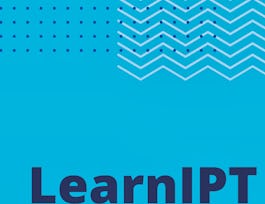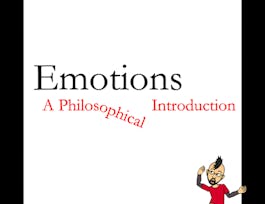Welcome to the comprehensive course on understanding and addressing chronic pain and associated conditions. This course spans seven modules, each designed to provide valuable insights and practical knowledge. From exploring the brain's role in pain perception to identifying the emotional and psychological factors at play, we delve deep into the mind-body connection. You'll learn to differentiate between structural and neural circuit-related pain, and discover emerging therapies like Pain Reprocessing Therapy (PRT) and Emotional Awareness and Expression Therapy (EAET). We also explore the application of this model to various conditions beyond pain. Along the way, you'll gain access to resources to further your understanding and help those dealing with chronic conditions. This course aims to empower you with knowledge and compassion, offering hope to individuals living with chronic pain and associated challenges.



Reign of Pain

Instructor: Howard Schubiner, MD
Sponsored by Taipei Medical University [C4CB]
5,301 already enrolled
(25 reviews)
Skills you'll gain
Details to know

Add to your LinkedIn profile
15 assignments
See how employees at top companies are mastering in-demand skills


Earn a career certificate
Add this credential to your LinkedIn profile, resume, or CV
Share it on social media and in your performance review

There are 7 modules in this course
Welcome to Module 1, "The Reign of Pain Lies Mainly in the Brain: Applying New Concepts in Neuroscience to Chronic Painful Conditions," presented by Howard Schubiner, MD. Throughout this course, our primary objectives are to expand your understanding of pain, particularly chronic pain, and its connection to the brain. Our exploration begins with "The Experience of Pain," where we delve into the profound aspects of pain, including its reality, intensity, and its relationship with injuries. We'll also examine historical data from the Beecher study to broaden our perspective. In "How the Brain Works: Predictive Processing," we'll uncover the brain's role in shaping our sensory experiences, from sight and sound to touch. We'll explore how the brain anticipates and reacts to our environment, sometimes sacrificing accuracy for efficiency. Lastly, in "What is Pain?" we'll delve into the necessity of pain as a protective mechanism, its brain-generated nature, and its role as an alarm system. We'll consider how the brain can produce a range of symptoms, even in response to non-physical threats.Throughout these modules, you'll engage in quizzes, reflective exercises, and readings, fostering a comprehensive understanding of the brain's influence on pain. So, let's embark on this enlightening journey into the intriguing world of pain and neuroscience. "The reign of pain lies mainly in the brain: Applying new concepts in neuroscience to chronic painful conditions." –Howard Schubiner, MD March, 2023.
What's included
3 videos3 readings3 assignments3 discussion prompts
Welcome to Module 2, "Stress and Emotions Can Cause Pain," where we explore the intriguing interplay between stress, emotions, and pain perception. In this module, our objectives are to understand how the brain determines pain occurrence, recognize the role of stress and emotions as pain triggers, define neural circuits in pain perception, and describe how the brain activates and deactivates these circuits. Through the engaging video "Understanding Pain in Three Stories," we examine narratives ranging from painless injuries to emotional triggers, backed by studies like Kross and Eisenberger. In "How the Brain Learns Pain," we delve into neural circuits' role in learning and their potential for triggering and extinguishing pain. Join us in unraveling the complexities of pain in Module 2.
What's included
2 videos2 readings2 assignments2 discussion prompts
Welcome to Module 3, "What Causes Chronic Pain?" In this module, we delve into the origins of chronic pain, exploring the critical role played by neural circuits, emotions, and our reactions in its development. Our objectives include recognizing how the brain learns and perpetuates pain, understanding the persistence of neural circuits in chronic pain, and identifying the influence of emotions and reactions. In "Part One: Reinforced Neural Circuits after an Injury," we analyze the story of Lorimer Moseley's snakebite and the factors contributing to the enduring pain, such as stress, fear, and the "six Fs." We emphasize that while injuries heal, neural circuit conditions can persist, lasting for extended periods. In "Part Two: Linkage of Emotions to Pain in Absence of an Injury," we explore how stress and emotions can give rise to pain, linking feelings to physical symptoms and highlighting the emotional triggers underlying pain. Join us in unraveling the complexities of chronic pain's origins in Module 3.
What's included
2 videos2 readings2 assignments6 discussion prompts
Welcome to Module 4, "Conditions That Can Be Nociplastic," where we delve into the concept of symptoms with symbolic origins and explore the mechanisms for understanding pain's location. Our objectives include recognizing the symbolic nature of specific symptoms, identifying common nociplastic syndromes, and understanding that imaging studies can reveal conditions like arthritis without accompanying pain. In Video One, we examine illustrative stories of chronic pain, highlighting the role of emotions and past experiences. The quiz challenges assumptions, and an exercise prompts reflection on trauma and chronic pain in individuals. In Video Two, we explore various pain syndromes, distinguishing primary from secondary causes. The quiz tests knowledge of pain syndromes, and an exercise encourages reflection on someone's diagnosis. Join us in demystifying nociplastic conditions in Module 4.
What's included
4 videos1 reading2 assignments2 discussion prompts
Welcome to Module 5, "How Does a Doctor Assess for Neural Circuit Disorders?" In this module, our objectives include recognizing how doctors can rule out structural conditions, as well as identifying ways to rule in a nociplastic condition using both circumstantial and confirmatory evidence. In Video One, "Ruling Out a Structural Problem," we emphasize the importance of thorough medical history, physical examinations, and testing to detect significant structural disorders while avoiding overdiagnosis based on common abnormalities in normal individuals. In Video Two, "Ruling In a NC Disorder—Circumstantial Evidence," we explore additional data beyond traditional medical assessments, such as body maps, associated conditions, and links to stressful life situations. Video Three, "Ruling In a NC Disorder—Confirmatory Evidence," introduces the FIT criteria (Functional, Inconsistent, Triggered) as confirmatory "tests" for identifying neural circuit or mind-body conditions. Quizzes and exercises provide opportunities for reflection, and readings offer further insights into this diagnostic approach. Join us in understanding the assessment of neural circuit disorders in Module 5.
What's included
5 videos3 readings3 assignments3 discussion prompts
Welcome to Module 6, "Treatment of Chronic Painful Conditions." In this module, we'll explore current methods of coping with chronic pain and why they have limitations. We'll also delve into emerging models of treatment that offer more effective approaches. Our objectives include identifying common current treatments, such as opioids, injections, surgery, and psychological therapies, and discussing their effectiveness and limitations. We'll then introduce two promising therapies: Pain Reprocessing Therapy (PRT) and Emotional Awareness and Expression Therapy (EAET). PRT involves careful assessment, education about pain, and exercises to calm the brain's danger signal, while EAET focuses on understanding the role of emotions in pain, identifying and expressing suppressed emotions, and promoting self-compassion. Through quizzes, exercises, and readings, we'll reflect on the various treatment options and their potential impact on chronic pain management. Join us in Module 6 to explore these innovative approaches to chronic pain treatment.
What's included
4 videos2 readings2 assignments2 discussion prompts
Welcome to Module 7, "Conclusions: Associated Conditions and Resources." In this final module, we'll expand our understanding of this model's applicability to various other conditions beyond chronic pain, including fatigue, insomnia, POTS, tinnitus, anxiety, depression, and more. Our objectives include recognizing the broad range of conditions this model can apply to and identifying valuable resources for individuals dealing with chronic pain and associated conditions. We'll emphasize the importance of cautious assessment to rule out structural conditions and explore resources like PPDA, TMS wiki, and books for both patients and professionals. As we conclude this course, we'll reflect on the knowledge gained, its practical implications, and the hope it can provide for those facing chronic pain and related challenges.
What's included
4 videos1 assignment2 discussion prompts
Instructor

Offered by
Why people choose Coursera for their career




Learner reviews
25 reviews
- 5 stars
96.15%
- 4 stars
0%
- 3 stars
3.84%
- 2 stars
0%
- 1 star
0%
Showing 3 of 25
Reviewed on May 14, 2024
Fantastic course - I learned so much. Powerful and empowering perspective in chronic pain
Reviewed on Dec 28, 2023
Excellent course. Includes current research and success stories. Explained in a simple and straight-forward way with compassion.
Reviewed on Jul 27, 2024
A comprehensive course that was interesting, engaging and easy to follow.
Recommended if you're interested in Health

University of Minnesota

University of Toronto

Universitat Autònoma de Barcelona

Northwestern University

Open new doors with Coursera Plus
Unlimited access to 10,000+ world-class courses, hands-on projects, and job-ready certificate programs - all included in your subscription
Advance your career with an online degree
Earn a degree from world-class universities - 100% online
Join over 3,400 global companies that choose Coursera for Business
Upskill your employees to excel in the digital economy

